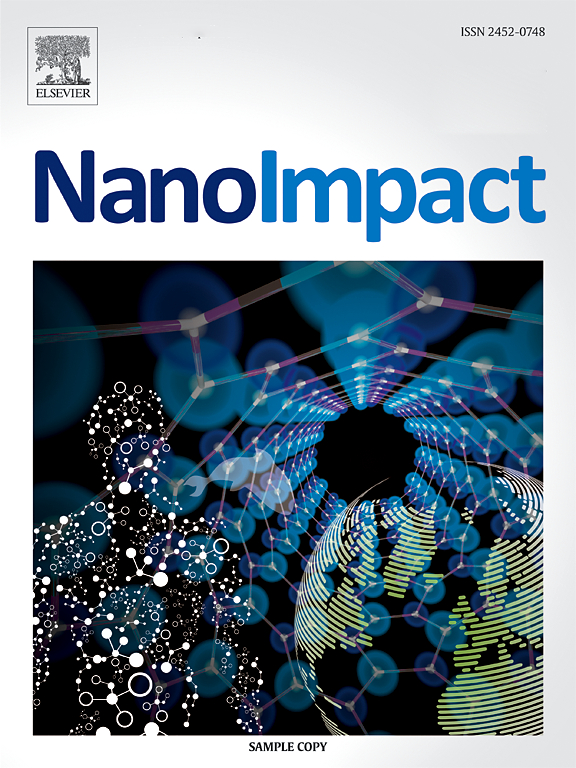Impacts of particle size and surface charge of ZnO on horizontal transformation of antibiotic resistance genes
IF 5.5
3区 环境科学与生态学
Q2 ENVIRONMENTAL SCIENCES
引用次数: 0
Abstract
The ever-growing antibiotic resistance in bacteria poses an enormous threat to public health and the environment. The horizontal transfer of antibiotic resistance genes (ARGs) is a major pathway for disseminating antibiotic resistance. As an inexpensive, nontoxic, and biocompatible material, ZnO with diverse sizes and surface properties have been prepared for widespread use. However, the effects and mechanisms of ZnO particles with different structural properties on the horizontal transfer of ARGs are not comprehensively understood. In this study, two groups of ZnO particles, one with the same size (93 nm) and different charge types (−9.5 and + 17.4 mV), and the other homogeneously positively charged but of different sizes (93, 215, and 2381 nm), were prepared. Their impacts on the horizontal transformation of ARGs mediated by plasmid pUC19 into E coli DH5α were investigated. In the positively charged group, the smallest ZnO nanoparticles at concentrations of 0.1–100 μg/mL induced 1.04–1.35 and 1.37–1.71-fold increases in transformation frequency when compared with that of the medium-sized and largest particles, respectively. In the similar-sized groups, positive ZnO promoted 1.06–1.32-fold increases than negative ZnO. Further investigation suggested that smaller and positive ZnO adsorbed more plasmids and correspondingly increased the uptake by recipient bacteria than that of larger and/or negative ZnO. In addition, the enhanced bacterial membrane permeability, ATP synthesis, and DNA replication were also accounted for the increased transformation. These results suggest that smaller-sized and positive ZnO poses a high environmental risk of spreading antibiotic resistance.

氧化锌颗粒大小和表面电荷对抗生素抗性基因水平转化的影响
细菌中不断增长的抗生素耐药性对公众健康和环境构成了巨大威胁。抗生素耐药基因的水平转移是抗生素耐药性传播的主要途径。氧化锌是一种廉价、无毒、生物相容性好的材料,具有多种尺寸和表面性质,具有广泛的应用前景。然而,不同结构性质的ZnO粒子对ARGs水平转移的影响及其机制尚不完全清楚。在本研究中,制备了两组尺寸相同(93 nm)且不同电荷类型(-9.5和 + 17.4 mV)的ZnO粒子,以及尺寸不同(93、215和2381 nm)且均带正电荷的ZnO粒子。研究了它们对pUC19质粒介导的ARGs向大肠杆菌DH5α水平转化的影响。在正电荷组中,浓度为0.1 ~ 100 μg/mL的最小ZnO纳米颗粒的转化频率分别是中等和最大ZnO纳米颗粒的1.04 ~ 1.35倍和1.37 ~ 1.71倍。在相同大小的组中,正ZnO比负ZnO促进1.06-1.32倍的增长。进一步的研究表明,与较大和(或)负ZnO相比,较小的和正的ZnO吸附了更多的质粒,并相应地增加了受体细菌的摄取。此外,细菌膜通透性、ATP合成和DNA复制的增强也导致了转化的增加。这些结果表明,较小尺寸和阳性氧化锌具有传播抗生素耐药性的高环境风险。
本文章由计算机程序翻译,如有差异,请以英文原文为准。
求助全文
约1分钟内获得全文
求助全文
来源期刊

NanoImpact
Social Sciences-Safety Research
CiteScore
11.00
自引率
6.10%
发文量
69
审稿时长
23 days
期刊介绍:
NanoImpact is a multidisciplinary journal that focuses on nanosafety research and areas related to the impacts of manufactured nanomaterials on human and environmental systems and the behavior of nanomaterials in these systems.
 求助内容:
求助内容: 应助结果提醒方式:
应助结果提醒方式:


